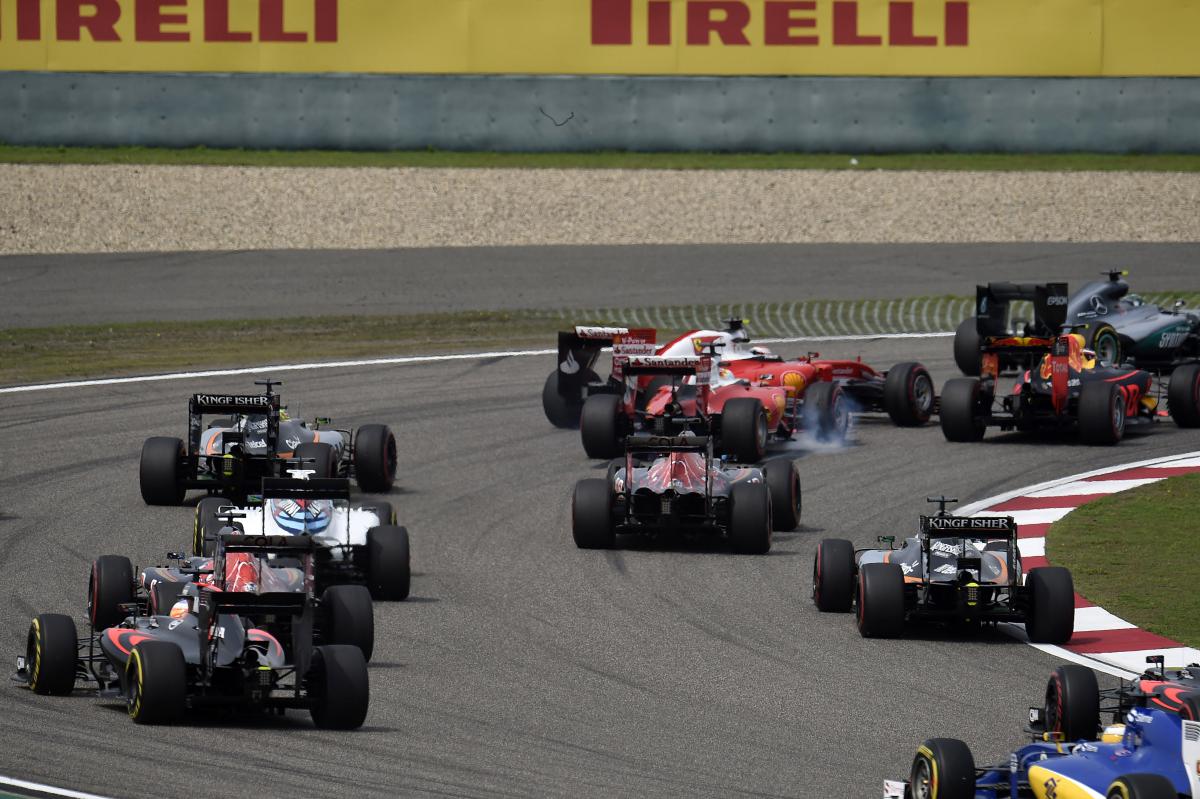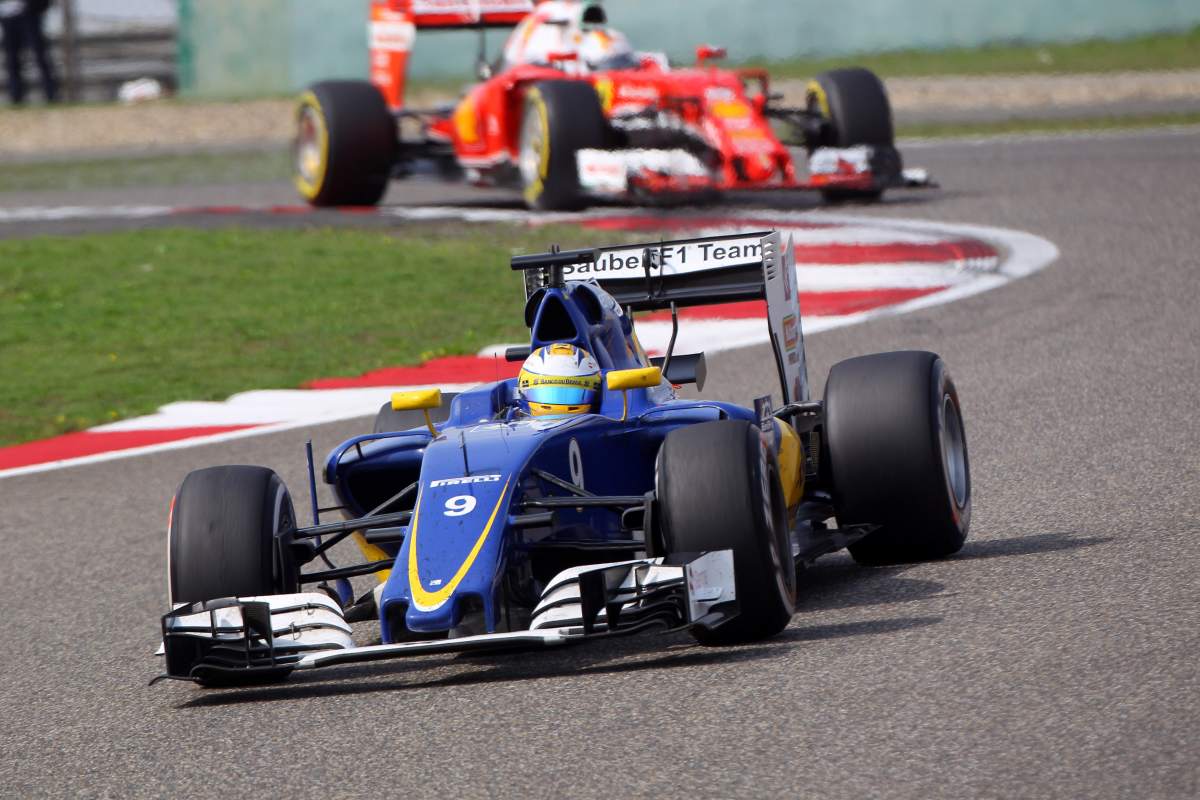Max Yamabiko: Aeroscreen - deflecting debris but impacting design

Red Bull Racing's answer to the question of driver head protection made a surprisingly early appearance at the Russian Grand Prix, seemingly an attempt to prove to the FIA that such a device could indeed be ready to race in 2017.
As was the case when Ferrari ran a mock up 'Halo' at Barcelona during pre-season testing the device, dubbed the 'Aeroscreen', fitted to the Red Bull RB12 is clearly just a prototype fitted to a chassis not designed to accommodate it. Despite the fact that what we see is just for testing purposes a number of issues and design features can be gleaned from examining it.
The design itself is really quite straightforward, it is a simple wrap round screen made of a polycarbonate type material, with a solid ring structure running along its upper edge. Two side supports are rather cleverly lined up with the wing mirror supports so in theory there is no detriment to side vision for the drivers.
However, there is more to installation of the device than is first apparent.
There are some quite obvious potential problems with its use in Grand Prix racing, the most obvious of which is the challenge of visibility. While the driver may be able to sit in the car and see out just fine when it is sitting still the curvature of the screen is bound to create some level of distortion when he is driving along and this could cause some misjudgements. How much distortion there is depends on the thickness of the screen, the material and the curvature, so perhaps the run at Sochi will answer some of those questions and allow any modifications needed to be made.
Vision is also a problem with the build-up of dirt and debris during a race, because of the shape of the Aeroscreen it will not be possible for drivers to use any tear off strips added to it, meaning that they could only be used during a pit stop (as is the case at Le Mans).
Wet weather is also an issue as even with all the 'Rain-X' in the world a wiper is still needed in bad conditions. There is no wiper included in this concept. Some treatments could be added to the inner (to avoid misting) and outer faces of the screen but heavy rain will still probably require a wiper. Another factor here is the life of the screen, when you look over a car in Parc Ferme after a race (particularly ones with sections with a high average speed like Monza) you see that the leading edges of the car have almost been sand blasted, how much of this treatment will the screen be able to take? Will the screen last a race, a race weekend, a number of races or an entire season? There are cost implications here.
Driver egress is also an obvious concern, can he get out of the car quick enough to satisfy the requirements of the FIA regulations? This is something which will likely be tested using the prototype device behind closed doors but seems particularly pertinent following Fernando Alonso's crash in Melbourne, could he have got out of that McLaren-Honda with an Aeroscreen fitted? It's hard to be sure but it seems unlikely. The device cannot be hinged in the way proposed for the 'Halo'.
For me though the most interesting element of the Aeroscreen is its installation on the car. While the 'Halo' throws up mainly structural challenges in terms of chassis design, the Aeroscreen's impact is mostly on the aerodynamics of the car. Yes, it will still require slightly different hard points on the chassis but none of them are in super tricky areas (which one of them is on the Halo). Ricciardo touched upon this ahead of the Sochi race but admits he isn't sure of the impact himself.
"Sure, it is a pretty well -sized structure, so sure there will be some change to the flow and everything of the car, but I have not got into the technical questions yet. I probably would not understand what they're saying anyway!
You do not need a top of the range CFD cluster of a wind tunnel to work out that the eroscreen will reduce the drag of the car overall and indeed it will change a lot about the design of the rear wing and other parts of the car.
One of the areas which will be the most influenced by the Aeroscreen will be the ducting above and behind the driver's head. Every single 2016 car has a cooling duct of varying size and shape in this area and with the Aeroscreen fitted it seems that these ducts will either have to be substantially reworked or relocated all together. This could lead to the cars having slightly larger side-pods and some internal power unit components having to be relocated along with the cooling ducts.
The rear edge of the Aeroscreen appears to mount in a location that many teams use for cooling louvres and it will change the way these work too.
More difficult to alter will be the flow to the airbox, which will also be influenced by the installation of the Aeroscreen. This will have an impact on IC engine performance as these ducts supply the charge air to the V6's in the back of the cars (as well as some transmission and ERS cooling flow on many cars). I would be stunned if Red Bull did not mount some flow sensors in the coolers and airbox to check what the impact of the Aeroscreen is on cooling and power unit performance.
The rear wing and designs of the rear wing will alter significantly with the implementation of the Aeroscreen, not just because they will have to under the 2017 technical regulations but also because is shape looks like it will supply very different flow to the rear wing. That in turn will change the design of the noses and the front wings (though the wing will also change with the new rules next year).
Optimising the design of a car around uncertain new regulations and the Aeroscreen will not be the work of a moment because of these substantial changes to the flow structures around the car. It could mean in some cases that teams will have to go back to the drawing board on many elements of their 2017 designs.
Again. I have spoken with engineers from a number of teams and they have told me different things, some are in the wind tunnel with 'halo' fitted, others without and as far as I know only Red Bull and Toro Rosso have tried out the Aeroscreen.
With the dimensions and exact regulations far from clear it makes serious aerodynamic development really quite difficult, and if the Red Bull solution is selected in its entirety it could give the Austrian owned fizzy drinks company a head start over all of its rivals.
By Max Yamabiko
Max Yamabiko will bring you a closer look at the technical side of motorsport throughout 2016, from the latest developments and solutions employed to keep you ahead of the game

